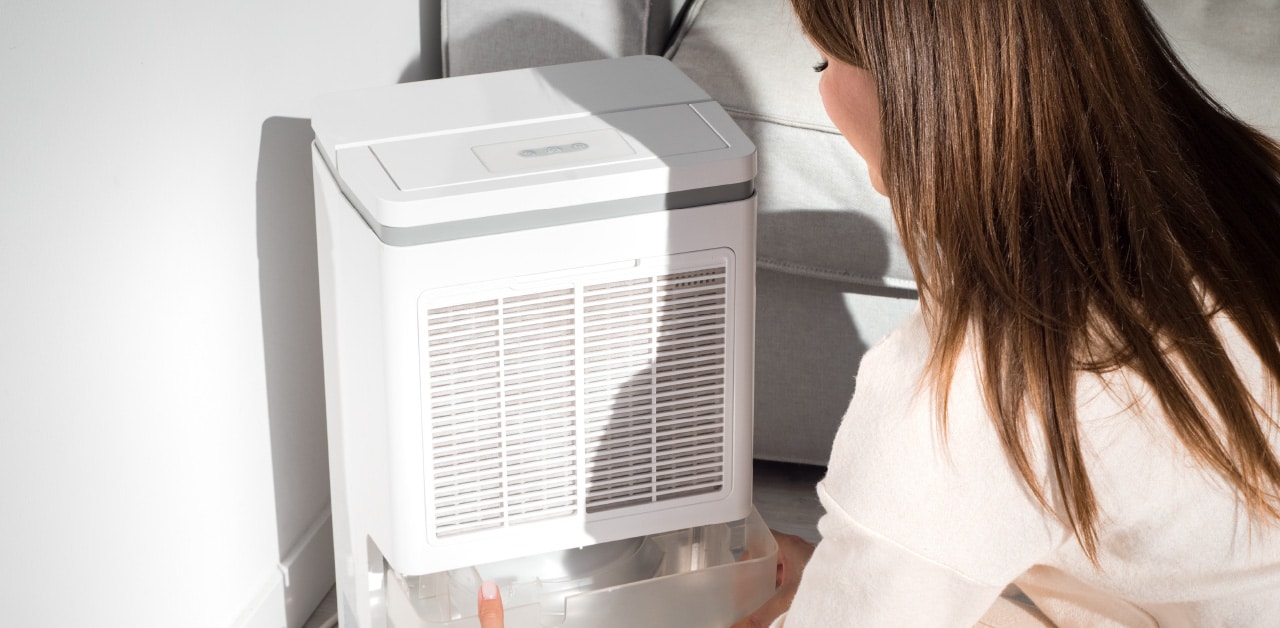The Benefits of Using a Dehumidifier - NEC Coop
Sep 29, 2022 — Electric Tips at Home, Energy Efficiency, Resources

Those who commonly get allergies know how they can get frustrating at times. If you live in an area with a humid climate, there are a lot of allergy triggers – mold, mildew, dust mites, seasonal allergies – and all these thrive in humid environments. A quality dehumidifier can help.
There are many benefits of using a humidifier. It lowers your home’s overall humidity levels by gathering water from the air, making it more difficult for mold, mildew, and dust mites to stick around. Without these, allergy symptoms are lessened, while protecting the family from asthma brought about by mold.
The benefits of using a humidifier
- Reduced cleaning – Like air filters, dehumidifiers not only reduce the home’s humidity levels but dust as well. This means that you don’t need to dust as often.
- Odor control – If your home smells musty, there’s a big possibility that there’s mold or mildew present. This funky smell could potentially be an allergy trigger, which reduces the amount of excess moisture in the air, lessening smells and odors.
- Lessens skin irritation – Dehumidifiers help eradicate dust in the air, so your skin won’t feel as itchy.
- Protection from damage to electronics, sheets, and clothing – Humidifiers remove excess humidity from the air, protecting sheets and clothing, as well as expensive electronics from developing rust.
- Preserves food – If your home is too humid, foods like cereals in bread will grow moldy or stale quickly. With a dehumidifier, you may be looking at less waste and a lowered grocery bill!
- Reduced utility bills – The humidifier allows your air conditioning unit to run more efficiently. It supports your air conditioner by removing moisture from the air so that your unit doesn’t have to. Your unit will not work as hard, prolonging its shelf life and reducing your energy expenses in the process.
Operating your humidifier
Dehumidifiers vary, depending on their model, so when it comes to proper usage, safety instructions, and maintenance, it’s best to refer to the documentation specific to your model.
The Environmental Protection Agency recommends that indoor humidity be between 30 and 50 percent for comfort, health, and preservation of bacteria and mold growth. You can measure your home’s humidity levels with the use of a humidity gauge or a hygrometer.
Whatever the size or type of humidifier you use, be sure to plug it only into a grounded outlet and place it on level ground. To ensure good airflow, place it at least six inches away from surfaces and walls.
Now that you are aware of the many benefits of using a humidifier, you know that it can help you live a healthier, more comfortable life. Plus, it can help lower your energy bill. It can take a little research, from choosing the best energy-efficient features to selecting the correct size, but the proper dehumidifier will not only prevent moisture damage to your home, but it will also improve your health by enhancing the air quality in your home.
Sources:
Mold Course Chapter 2: Why and Where Mold Grows, EPA, https://www.epa.gov/mold/mold-course-chapter-2
“Improving Comfort in Hot-Humid Climates with a Whole-House Dehumidifier,” US Department of Energy, https://www.energy.gov/sites/prod/files/2013/11/f5/case_study_wholehouse_dehumidifier.pdf

